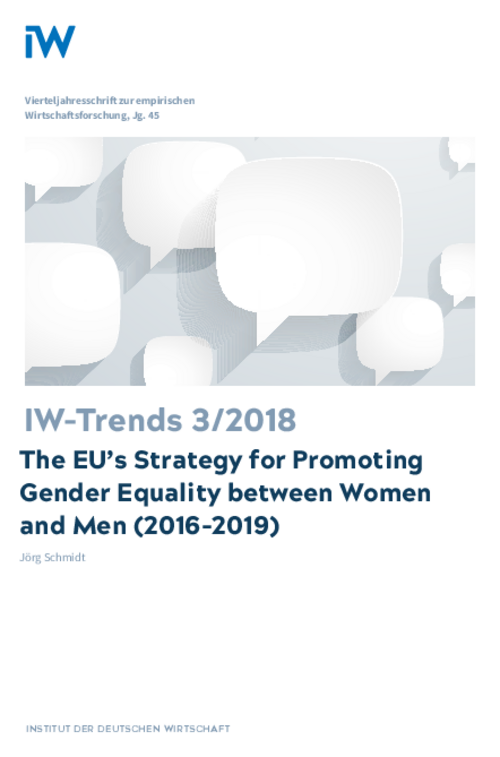This paper examines possible options for refining the indicators in three economic related policy areas of the EU’s strategy for gender equality between men and women (2016–2019). The objectives and measures of the EU strategy are not analyzed, but modifications and extensions of the empirical reporting are proposed.

Options for Refining the Indicators in the Three Priority Areas of Economic Policy: The EU’s Strategy for Promoting Gender Equality between Women and Men (2016–2019)
IW-Trends

This paper examines possible options for refining the indicators in three economic related policy areas of the EU’s strategy for gender equality between men and women (2016–2019). The objectives and measures of the EU strategy are not analyzed, but modifications and extensions of the empirical reporting are proposed.
As a result, the causes of existing gender-related inequalities are taken into (even) greater consideration. The additional information provided can also help to better predict the expected effects of certain policies prior to policy decisions. First, additional data on self-employment by men and women could support the development of differentiated policy recommendations for (dependent) employees and self-employed persons. In addition, the Gender Overall Earnings Gap provides no added value. Assessing the progress by means of the data underlying this synthetic indicator seems more appropriate. Furthermore, as part of the indicators in the area of economic decision-making, focusing on the macroeconomic level rather than on a particular group of the largest companies would result in important additional insights. Despite technical constraints, disaggregation by age may be particularly useful, for example to highlight the special significance of reconciling work and family life.

Jörg Schmidt: The EU’s Strategy for Promoting Gender Equality between Women and Men (2016–2019): Options for Refining the Indicators in the Three Priority Areas of Economi
IW-Trends

More on the topic

German Wage Policy between Inflation and Stagnation: Are Conflicts with the Aims of Monetary Policy Looming?
After the economic and financial crisis of 2008/9, the German labour market soon began to recover, creating scope for a comparatively expansive wage policy.
IW
Orphaned executive chairs in German companies
In 2023, half of the companies in Germany reported increasing problems in filling vacancies for management positions because employees are not aiming for a career. Larger companies are less affected than small companies.
IW